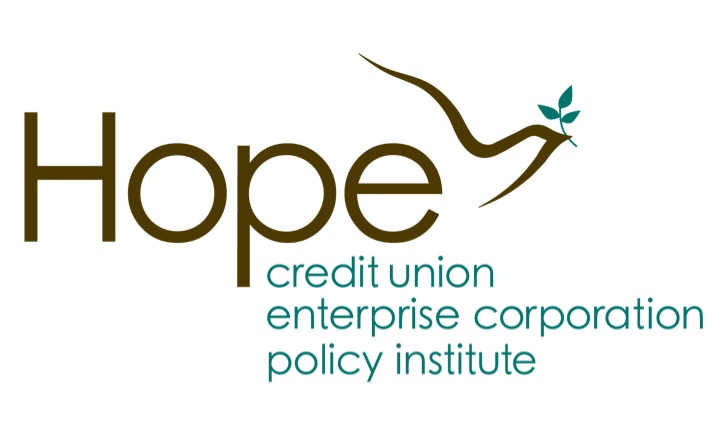By Hope Policy Institute staff Calandra Davis, Policy Analyst, and Diane Standaert, Director
State lockdowns and the rapid unemployment rise at the beginning of COVID-19 wreaked havoc on local governments’ budgets, as they also faced increased demands of addressing the public health needs of their communities. As summarized here, relief aid designated for local governments is bypassing many Louisiana’s rural communities, particularly communities of color, that have been locked in poverty for generations.
As part of the omnibus Coronavirus Aid, Relief and Economic Security (CARES) Act, Congress included a $150 billion relief fund to assist tribal, state, and local governments during the public health and economic crisis. This fund, known as the Coronavirus Relief Fund, can cover a broad range of expenses, such as payroll, personal protective equipment, rental assistance, paid sick leave, contact tracing and many other things. The relief funds cannot cover lost revenues. Under the federal regulations guiding the use of the fund, it can only be used for expenses directly related to COVID-19 and not already accounted for in local budgets approved before March 27, 2020.[1] Any unused funds will return to the federal government after December 30, 2020.
Louisiana received $1.8 billion from the Coronavirus Relief Fund dollars. On June 12, 2020, Gov. John Bel Edwards signed Senate Bill 189, allocating 45% of the funds or $811 million to local governments and small business relief.[2] Local governments were allocated $511 million of the funding. The 64 Louisiana parishes must apply to the state for funding and provide documentation of their expenditures to receive the funds as a reimbursement. To spread the resources across the parishes, Louisiana pre-determined an allocation for each parish, based on population size, allowing counties to seek reimbursement of expenses up to that allocated amount. [3] This reimbursement structure means that parishes already struggling to access resources before COVID-19 will have trouble getting the relief funds, particularly majority people of color, rural and persistent poverty parishes.
Using the most recent publicly available data from Louisiana’s Joint Legislative Budget Committee, this analysis assesses disparities in the accessibility of these local government allocations between June and July, the first two rounds of allocations.[4]
The data show that Louisiana rural and persistently poor parishes are accessing much fewer of their available dollars than other parishes. For example, of the 38 parishes that have accessed less than 10% of their funds, over half are rural parishes and the majority are persistent poverty parishes. Another way to see this same pattern is that non-rural parishes as a whole have already been able to access about 60% of their allocated funds, but for rural parishes, they have accessed just 17% of their funds over the same timeframe. See Table 1.
Table 1: Percentage of Allocated Funds Accessed for Rural and Persistent Poverty Parishes,
| Category | % of Allocation Accessed |
| Persistent Poverty Parishes | 47% |
| Persistent Poverty Parishes, excluding Orleans Parrish | 22% |
| Non-Persistent Poverty Parishes | 65% |
| Rural Parishes | 17% |
| Non-Rural Parishes | 64% |
| Non-Rural Parish, excluding Orleans Parish | 57% |
When we add in race to this analysis, the disparities become even starker. Looking at parishes that are both rural and persistently poor, the access to the funds differs by race. Rural, poor parishes that are majority people of color have only accessed 1.2% of their allocated funds, but those that are rural, poor and majority white have been able to access 23% of their allocated funds. See Table 2. There are five parishes in Louisiana that are rural, majority people of color, and designated persistently poor, meaning they have poverty rates greater than 20% for more than 30 years. They are East Carroll Parish, Madison Parish, Tensas Parish, Claiborne Parish, and Morehouse Parish. All are located in in the northeast Louisiana Delta region.
Table 2: Percentage of Allocated Funds Accessed by Rural, Persistent Poverty Parishes, By Race
| Category | % of Allocation Accessed |
| Majority People of Color Parishes, that are Rural and Persistently Poor | 1.2% |
| Majority White Parishes, that are Rural and Persistently Poor | 23% |
This inequitable access to local government funding designated for COVID relief is troubling. While fewer cases in rural areas were reported than larger cities, these communities are more susceptible to the pandemic and economic crisis with more uninsured residents, fewer hospitals, and less revenue.[5]
Parishes only have one remaining round to access allocated funds before November 1, 2020 via the existing reimbursement process. The reimbursement-only structure, insufficient targeted outreach, and limited technical assistance available to parishes are key reasons why fewer rural and persistently poverty parishes accessed very few of their available dollars. Louisiana should allow greater flexibility beyond a reimbursement-only structure, and engage in explicit outreach and assistance strategies, to ensure communities hardest hit by the crisis are able to access these funds. As just one example, State leaders can look to Georgia as a best practice as they have made 30% of each local government’s allocation available as an advance.[6] Addressing inequities in relief funding now is critical for reducing COVID’s health and economic impact, and for preventing deeper inequities in the future.
[1] Maher, Emily. State Uses of the CARES Act Coronavirus Relief Funds. August 2020. https://www.ncsl.org/research/fiscal-policy/state-uses-of-the-cares-act-coronavirus-relief-funds-magazine2020.aspx
[2] Senate Bill 189. https://legis.la.gov/legis/ViewDocument.aspx?d=1182500. June 2020.
[3] Joint Legislative Budget Committee, “Louisiana Cares Local Government Program Revised Allocation Schedule,” Accessed October 2, 2020, https://louisianacares.la.gov/
[4] Joint Legislative Budget Committee, “Louisiana CARES Local Government Coronavirus Relief Funding Total Requests by Parish for Application Period 1 (June 1 – June 15th) and Application Period 2 (July 1 – July 15),” https://louisianacares.la.gov/JLCBAugust14FINAL.pdf
[5] Burt, Kiyadh. Standaert, Diane. Standing In the Need of Care. http://hopepolicy.org/blog/standing-in-the-need-of-care/. April 2020.
[6] Georgia Office of the Governor, Press Release, July 20, 2020 “Gov. Kemp Issues Guidance on CARES Act Funding to Georgia Communities,” https://gov.georgia.gov/press-releases/2020-06-29/gov-kemp-issues-guidance-caresact-funding-georgia-communities
